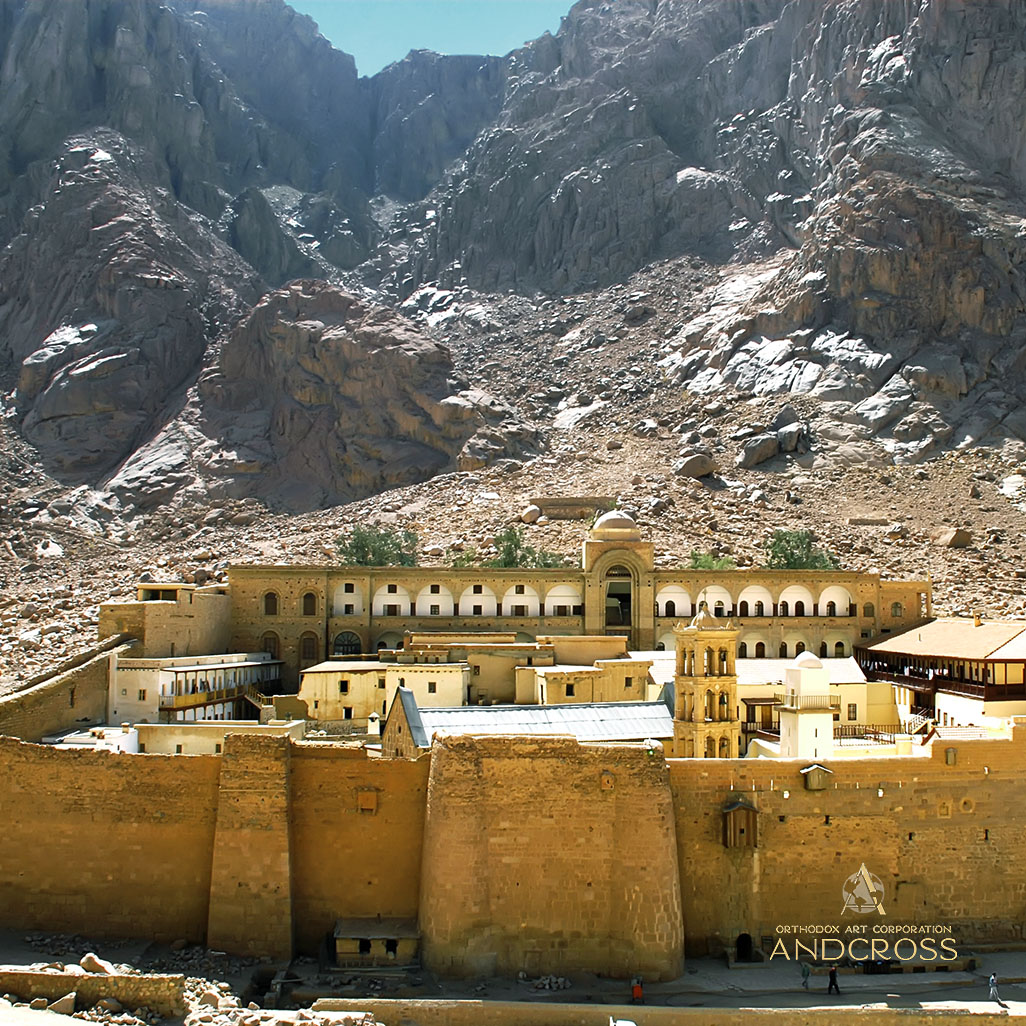
When thinking about ancient civilizations, most people instantly imagine Egypt. Every child knows about this kingdom on the border between Africa and Asia. It’s famous for its pyramids, pharaohs, and Sphinx. And for believers, the country is famous as the ancient Christian land.
Thanks to the Holy Land located nearby, faith in Christ began to penetrate the Sinai Peninsula and Africa after the end of His earthly life. In the 1st century AD, both Palestine and Egypt were provinces of the Roman Empire. And the local Christians were persecuted by pagan authorities. But as true faith began to overcome paganism in Rome, the same thing happened everywhere else.
Between the 4th and 7th centuries, Christianity was the dominant religion in Egypt. At that time, the country was part of the Byzantine Empire.
Christianity is so deeply rooted in the country that even the conquest by Islamic civilization didn’t make it disappear as it happened in many other territories. For hundreds of years, Egyptian Christians were living as a religious minority in the Muslim community. Nevertheless, they continued to maintain and develop their faith. Today, about every 10th citizen of the country belongs to Copts. That’s what local Christians are called.
During times of persecution, Greek rule, and Islamic domination in Egypt, real masterpieces of Christian art were created and relics and treasures were obtained. Now, they attract pilgrims from all over the Christian world. People go to Egypt to pray and front of them, think of having their bodies and souls healed, and hope that the Lord will help. And many of them return from pilgrimage having found the solutions to their problems by the grace of the Almighty.
The main pilgrimage site in Egypt is St Catherine’s Monastery. It’s located at the foot of Mount Sinai in the Asian part of the country. This is one of the oldest working convents on the planet. Saint Catherine lived in the 4th century. She was a young beautiful lady born into a noble Christian family in the city of Alexandria. The pagan emperor Maximian wanted to marry her and force her to abandon her faith in Christ. For her refusal, she was cruelly tortured and murdered. The relics of the martyr are the main treasure of the monastery. She is a patroness saint of unmarried girls and helps them to find happiness. People pray to her when they want to find true love or get married. She also helps to conceive children and give birth successfully. She protects from the sin of fornication and keeps families from divorce.
The second most important treasure of the monastery is a plant growing on its territory – the Burning Bush. It was this bush that was on fire but didn’t burn when the Lord appeared to the shepherd Moses and ordered him to lead the Jewish people out of Egyptian slavery.
It’s impossible to name all the treasures of the monastery. Since it has never been ruined and destroyed, thousands of ancient books, manuscripts, and scrolls in different languages have been preserved there. The local library is rightfully considered a true treasure of mankind and is second only to the Vatican library. We can say the same about the icons of the monastery. The sacred images painted in the 6th century with heated wax are considered the oldest in the world.
Trails to the top of Mount Sinai start here – at St Catherine’s Monastery. In the Bible, it’s one of the places where the main events of our history took place. It was this very place where the Lord revealed the Ten Commandments to Moses in the presence of the children of Israel. Christians of all faiths still live by them. Muslims and Jews also consider the mountain sacred.
Today, pilgrims go to the mountain top, using the same paths that monks have used for centuries. There’s a stunning view at the top. Reaching it, believers ask for forgiveness for their sins, and God forgives those who sincerely repent and pray with an open heart.
On the way to the mountain top and back, pilgrims have the opportunity to see ancient sanctuaries. The Trinity Chapel built in the 4-5th centuries lies in ruins nowadays. There is a cave where Moses spent 40 days fasting and praying, while waiting for the Commandments, near it. There is also the Cave of Elijah on the mountain. A well with healing water is located nearby.
It’s quite difficult to visit the holy places alone because of many issues related to paperwork, language, and transport. It’s much easier to visit the sanctuaries as part of an organized group of believers.
The Andcross Pilgrim Ecclesiastic and Educational Center organizes trips not only to Egypt but to other countries as well. Among our destinations are Greece, Georgia, Italy, and the Holy Land (Israel and Palestine). For more than two decades of work, the center has gathered vast experience that allows us to plan the best routes at the lowest cost, find accommodation and places to eat, and organize meet and greet service.
Visit the center’s website to learn more about our pilgrim tours. You can find info about upcoming trips and photos from previous travels there.
Pilgrim Ecclesiastic Educational Centre Andcross






